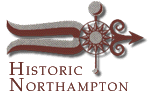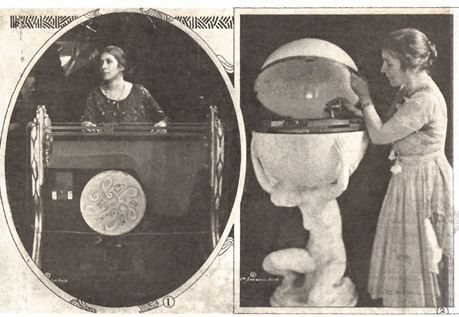
Exhibits Events Past Program Highlights 
|


The Light of the Senses
A Women's History Month Talk by
Anne Ciecko, University of Massachusetts at Amherst
Sunday, March 9, 2014 at 3 pm
at Historic Northampton Museum & Education Center
 |
Mary Hallock-Greenewalt and Her Unique Inventions |
Mary Hallock-Greenewalt (1871-1951) was a pioneer in experimental audiovisual art/visual music who has received scant biographical attention. This presentation will chronicle a quest to learn more about Mary and her Syrian mother, Sara, the inspiration for her daughter's fascinating synesthetic inventions. Traces of their complex lives found in archives and libraries—including Historic Northampton—illuminate intertwined institutional and technological histories in which women's contributions and experiences have been misunderstood or overlooked. Please join us for a discussion of local and transnational life-stories, artifacts, and sensations of two individuals well worth remembering.
Anne Ciecko is an Associate Professor of international cinema in the Department of Communication at the University of Massachusetts, Amherst.
Please note seating is limited to 25 chairs.
About the image:
Mary Hallock-Greenewalt and Her Unique Inventions: The first picture shows Mrs. Greenewalt seated at the device which is capable of projecting a light scale, regularly varying in degrees of intensity. The second photograph depicts her in the act of adjusting her phonograph with automatic illuminating means to play a record of her own piano interpretations.
Biographical material about Mary Hallock-Greenewalt from Wikipedia:
Mary Elizabeth Hallock-Greenewalt (1871–1951) was an inventor and pianist who performed with the Philadelphia and Pittsburgh symphonies as a soloist. She is best known for her invention of a type of visual music she called Nourathar.
The name for her art, Nourathar, was adapted from the Arabic words for light (nour), and essence of (athar). Unlike earlier inventors of color-music, Hallock-Greenewalt did not produce a strict definition of correspondence between specific colors and particular notes, instead arguing that these relationships were inherently variable and reflected the temperament and ability of the performer.
Her earliest attempts at creating this art entailed her construction of an automated machine where colored lights were synchronized to records. This produced an unsatisfactory result, leading to her development of an instrument that could actually be played live.
Her color organ, which she named "Sarabet" after her mother, required her invention of a number of new technologies. She received nine patents from the United States Patent Office for them. Among these devices was a non-linear variety of rheostat, a patent that was infringed by General Electric and other companies. She sued them for infringement and won in 1934. The Sarabet went through a series of refinements between 1916 and 1934. In 1946 she published a book on her invented art of "light-color playing" called Nourathar: The Fine Art of Light-Color Playing.
Hallock-Greenewalt also produced the earliest hand-painted films known to still exist. These films were produced specifically to be performed by her earliest version of the Sarabet which was a machine for automatic accompaniment to records. This device was an early music visualizer of the type now included with computer audio-players. Even though these films were not designed to be motion pictures, they were produced with templates and aerosol sprays, producing repeating geometric patterns in the same way as the hand painted films of Len Lye from the 1930s.
Contents Historic Northampton.